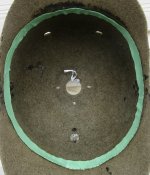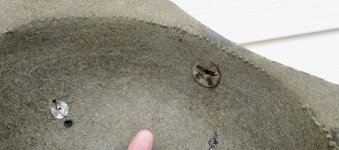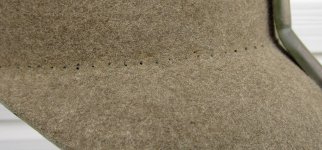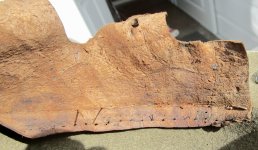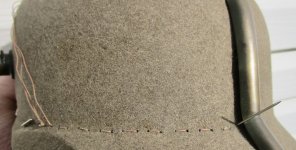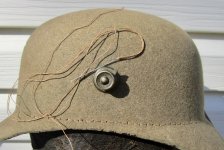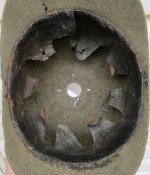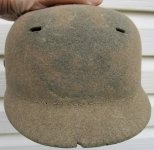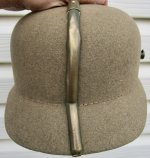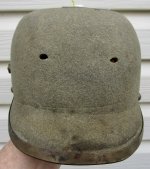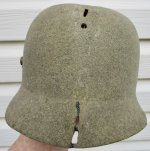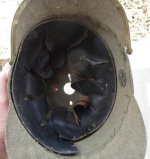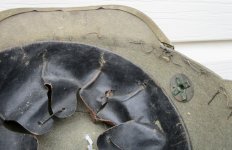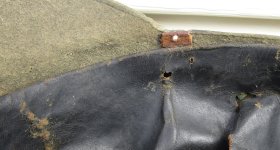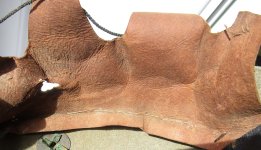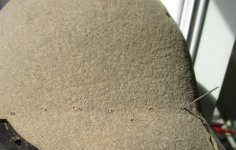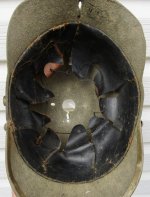So our resident filz helmet restorer Mathew, you know the guy who is always looking for felt helmets in need of some TLC has been after me for several years to stitch in new original liners into some of his felt helmets. Just before the SOS I had finished all my restorations and was afraid of being left with nothing to do. Consequently, I finally gave in and agreed to try and restitch liners into his hats......he sent me 6 !!  Here is what a stack of 6 filz helmets looks like:
Here is what a stack of 6 filz helmets looks like:
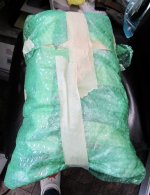
Oh, and I am wearing my Canuck indoor Crocs as usual...thanks again James!
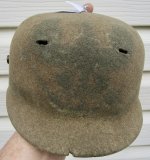
This is the first one of six pulled out of the stack...a Prussian reservist. Naturally Mathew removed as much hardware as he could before shipping.
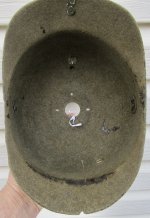
The inside of the empty shell. This is one of the thick hard shell versions of filz helmets. For some reason, most of the original liner stitch holes have disappeared. I have stuck a T pin into one as a sort of guide ??
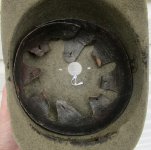
This is the original liner that I have been sent to stitch into this hat.
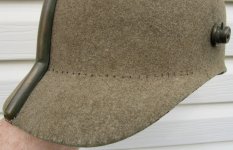
As the original stitch holes have disappeared, I have to remark them in pencil. I have an original helmet from my collection to work from.
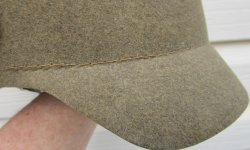
The original example that I have to work from.. My helmet is the same thick hard felt but does not have the rear spine. The stitch holes here are 5 mm apart as they are on Mathew's liner.
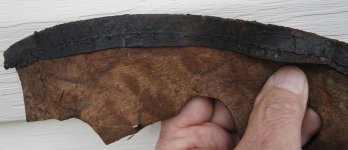
A close up of the stitch line on the donor liner.

Oh, and I am wearing my Canuck indoor Crocs as usual...thanks again James!

This is the first one of six pulled out of the stack...a Prussian reservist. Naturally Mathew removed as much hardware as he could before shipping.

The inside of the empty shell. This is one of the thick hard shell versions of filz helmets. For some reason, most of the original liner stitch holes have disappeared. I have stuck a T pin into one as a sort of guide ??

This is the original liner that I have been sent to stitch into this hat.

As the original stitch holes have disappeared, I have to remark them in pencil. I have an original helmet from my collection to work from.

The original example that I have to work from.. My helmet is the same thick hard felt but does not have the rear spine. The stitch holes here are 5 mm apart as they are on Mathew's liner.

A close up of the stitch line on the donor liner.
Last edited:



